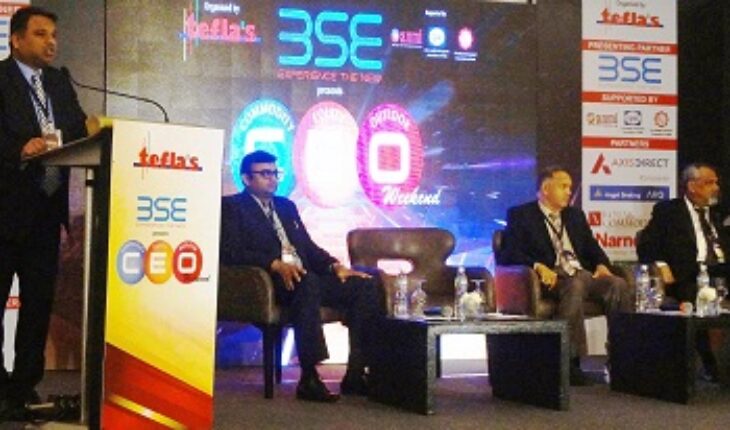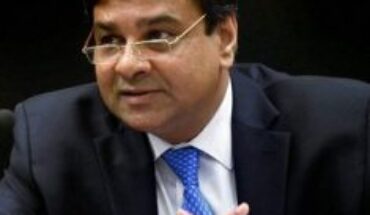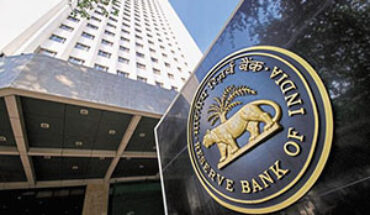The outlook for crude oil, gold and silver, select base metals and major agri-commodities (veg oil, sugar, cotton) — by domain experts examining the global and Indian market drivers in the Commodity and Equity Market — was highlighted during Tefla’s Conference & Exhibition on “Commodities & Equities Outlook Weekend 2018” in Mumbai recently.
With the Indian market going through a big bullrun, the event analyzed whether the domain experts viewed the going ahead in CY18 as witnessing the market remaining highly volatile on the back of domestic and global cues.
Ankit Ajmera, ANMI (Western Region) said that long-term capital gains was a good thing but the Government needed to look into taxability on Capital Markets. “There is a need to adjust to the changing environment and trading issues, while also increasing the investor base. The number of DEMAT accounts have not gone up much and focusing on investor education is of prime importance,” he said, adding “We have come up with an “Investor Classroom” comprising 30-each batches for our own employees and others to spread awareness among the investor class and increase the investor base in capital markets.”
Sameer Patil, Head, Business Development, BSE, while describing the Bombay Stock Exchange as the largest in Asia with 1400 members, said that from October 1, 2018, the BSE will be venturing into the into the commodities space. “We are the largest in Mutual Funds (85%) and we clocked on US$ 1 billion on Indian INX, besides doing US$ 500-600 million per day while operating on a 22-hours exchange.”
Mrugank Paranjpe, Managing Director & CEO, MCX, said that around 18 to 24 months is the time taken for achieving sustainable volumes that have continued to be sustained afterwards. “One year onwards is a good time taken to achieve contracts — 60%-to 65% — and about trading in India is what we’ll see SEBI doing next year. We made great strides last year, but we did’nt see too many AIFs. The commodity markets over last 15 years have witnessed the derivatives side doing very well but they are fragmented and have 29 regulators. There is need for developing underlying commodity spot markets.”
“The next few years will see: building of new products options being laid out; competition being viewed as not necessarily a threat but advantage to grow the market; need for educating “hedgers” to come together in the market; and also need for support of the Maharashtra Government to do much for the Farmers in Vidarbha region in Maharashtra,” Paranjpe added.
Pratap Chandiramani, Product Head – Product & Business Development, BSE, while highlighting “Future of Derivative Trading”, said “The Prime Minister Narendra Modi’s vision is a ‘price-setter’ and to fulfill this dream, we started the India International Exchange in 2017 which is now in its 18th month of operations (including the GIFT City in Gandhinagar, Gujarat). Our milestones included: May 18 witnessing with daily trading turnover exceeding US$ 1 billion and cumulative turnover of US$ 52 billion; Aug’17 witnessing development and launch of 1st Gold options in India; launch of Cross-Currency F&O; Tax benefits at par with Global IFC; Income Tax holidays (100% of eligible profits or gains in first 5 years; 50% of eligible profits or gains for next five years) and the only tax being SEBI’s fee – which is negligible.”
“Membership is open to any Indian or foreign entity with IFSC. India INX is the most competitive Exchange globally. Global Securities Market launched in 2017 and raised US$ 22 billion in funds. Foreign players have multiple options to participate and even foreign banks, global brokers can be participants in the INX,” Chandiramani said.
Prasad D G, Head of Research, BSE, while speaking about Capital Market Overview, described the Indian Capital Market as “stable” with a 7% GDP growth rate that is slated to become 7.6% in 2020 and 7.8% in 2021, due to the structured reforms and ‘ease-of-doing-business.’ “Global Indices showed that India jumped 42 places ahead in short time with SEBI playing a proactive role in financial reforms. Inflow in capital markets witnessed substantial increase and India is being seen as one of the most attractive destinations for foreign participation. Reforms give indication that India is moving forward and SEBI, BSE are giving clear directions to all investors.” He said.
Prasad said “The BSE is going beyond a trading platform and helping raise capital for entire markets. There is huge need of capital in India – US$ 2 to 5 billion – in the next 15 to 20 years. There is also need for platforms to raise capital domestically and through foreign cash flow. The BSE is working on how to make this platform capitally attractive. Once the +Universal Exchange+ concept comes into the picture, the Indian Capital Market will have a bright future and be a big booster for the Indian economy, going forward. Indian investors should not be too concerned about disturbances in the market, as long as the long-term outlook remains steady.”
The Indian economy is one of the bright spots in the slowing global world and India is expected to be one of the fastest-growing emerging markets (amongst US$ 1 trillion GDP size economies) next year. Many economic indicators are already showing signs of recovery and while one cannot conclude that full-fledged economic recovery is underway, the signals are positive.
Several event risks including geopolitics and monetary policy imparted volatility to the global commodity markets in 2017. Significantly, crude oil and gold ended the year on a high note. Some base metals too – like copper – made significant gains during the year, which agricultural markets largely remained subdued following large harvests across the world. While global events have exerted their impact on the Indian commodity markets, domestic policy initiatives such as demonetization of high denomination currency notes and introduction of Goods and Services tax as well as changes in trade and tariff policies influenced commodity market performance. Regulatory initiatives such as introduction of Options contracts were highly supportive.
What’s in store for 2018? While global growth is forecast to rebound, the year will also be replete with uncertainties and challenges – geopolitics, monetary policy and weather – to name a few. It is important to crystal-gaze how the global and Indian commodity markets are likely to behave in the months and quarters ahead.
Will the ‘bull run’ continue in 2018? The India growth story has captured the imagination, and Indian capital markets are no exception to this narrative. Dalal Street has caused quite a few ripples in 2017, with its benchmark soaring 28% year-on-year – thanks to a larger-than-ever slice of the Indian Diaspora getting invested in its success. The evolution of Indian capital markets has made it the preferred investment destination for myriad investors, with Moody’s affirming this through a recent upgrading of India’s credit rating, after a prolonged gap of 13 years. India’s capital markets — with robust fundamentals and a reformed regulatory system no longer fettering it — will surely bring the bulls to bear in 2018.






